Anthony Hill’s Newsletter
Christmas 2019
Season's Greetings to all
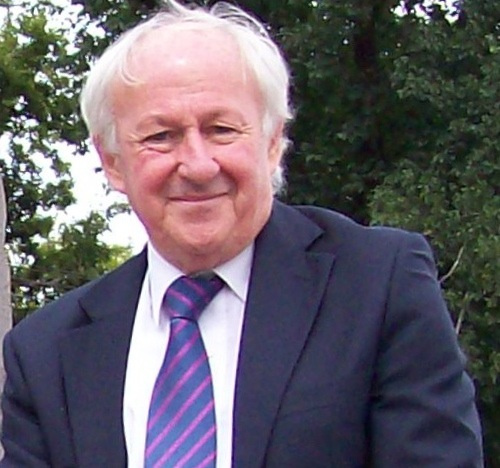 Dear friends
Dear friends
Welcome to my Christmas newsletter. In this edition:
* The Last Convict cover
* Planning a move
* The Investigators * Cook Commemorations
* Literary Awards * Books in print
* Christmas story: Royal Tour
Preview: The Last Convict cover
A lovely surprise shortly before Christmas when the final cover for my new book, The Last Convict, arrived from Penguin Random House. I think it’s a splendid realisation, in turquoise and aquamarines, of the theme of transportation and exile: sombre without being bleak, drawing the reader into the story. I hope you like it as much as I do.
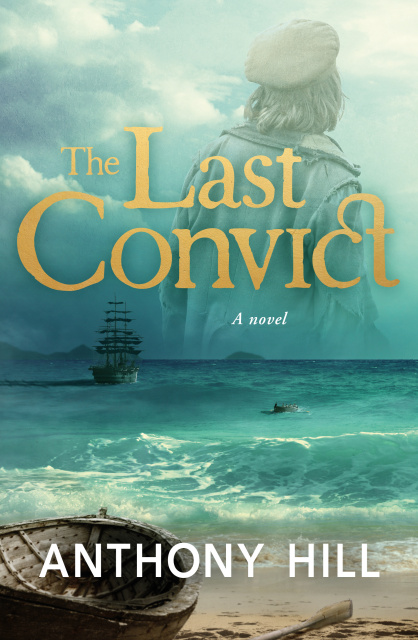 The tale concerns a young man called Samuel Speed, transported to Western Australia in 1866 for having burnt a barley stack with a companion because they were starving and wanted to go to prison for regular meals.
The tale concerns a young man called Samuel Speed, transported to Western Australia in 1866 for having burnt a barley stack with a companion because they were starving and wanted to go to prison for regular meals.
It turned into exile for 72 years. When Speed died in November 1938, less than a year before the outbreak of the Second World War, he believed himself to be – and is widely accepted as – the last transported convict to die in Australia.
I’ve written the book as historical fiction, but the emphasis is very much on the fiction.
After having researched the story on and off for the past 15 years, there is still much that we don’t know about Speed. His career as a convict is clear enough from the public records and a few official documents from his later years in Perth; but who he really was as an individual is still something of a mystery.
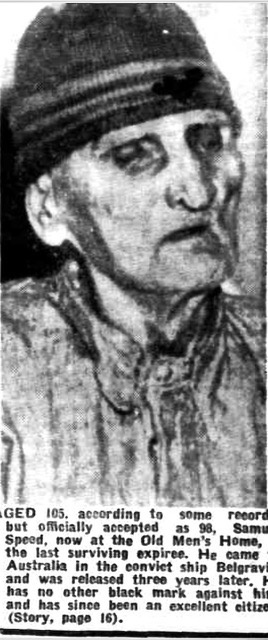 His true age and even his birthplace remain uncertain. Sam claimed in a newspaper interview, three months before he died, to have been born at Birmingham in 1840: but of the six Samuel Speeds born in the wider Birmingham region between 1840 and 1850, one died in 1863 and the other five were still living in England in 1871.
His true age and even his birthplace remain uncertain. Sam claimed in a newspaper interview, three months before he died, to have been born at Birmingham in 1840: but of the six Samuel Speeds born in the wider Birmingham region between 1840 and 1850, one died in 1863 and the other five were still living in England in 1871.
So either his birth wasn’t registered (a real possibility at that time) or he was an old man fudging the truth to the journalist (again, not an unknown phenomenon).
Samuel Speed, Perth Mirror 27 August 1938
The whole story indeed has been written from the point of view of that one morning when Speed gave his interview to the newspaper, and the dichotomy between what he’s telling the reporter and what he’s actually remembering. Plenty of room for fudging there.
And while I’ve used hints in the report to develop my version of Sam’s character, the article has many historical inaccuracies about convict escapes and bush-ranging in the West, which I’ve sought to correct and expand to place Sam Speed’s remarkable life in the context of his times.
The Last Convict is due for publication around July 2020. I’ll keep you posted when copies are available.
Planning a move
While we have the cover of The Last Convict, we’ve still got a fair way to go yet before the work is finished. I’ve just received the edited pages, which will keep me fully occupied over Christmas and the New Year.
The next few months in fact are going to be extremely crowded. There’ll be Sam Speed, continuing research and reading-in for my proposed Matthew Flinders book (see Winter edition), added to the awful business of packing up the house.
After 46 years living in Canberra and district, we’ve finally decided to move back closer to Melbourne and home. Our daughter lives there with her family, and despite several extended trips down each year we’ve been missing them.
To be sure, we’ve been talking of going back these ten years or more, but kept putting it off – baulking, we now realise, because we didn’t want to live in Melbourne itself. When we left in 1972 the city had less than a million people. Now it’s almost five million, and the crowds and traffic are frightful after so many years in the bush capital.
Not long ago the suggestion was made we should look at the Mornington Peninsula instead. I’ve always been drawn to it since I went there on holidays as a boy with my aunt and cousins. So we went down for a few days last month – loved it – and decided to make the move. If we don’t do it now, we never will.
It’s the perfect compromise for us: only 30 minutes up the freeway from Jane and our extended family; good public transport for when we get too old for the car; close to some of the nicest beaches and countryside in Victoria; and with plenty of markets for us old traders and dealers.
 Yes, and something else. On the first day we went to Mornington, we strolled to the foreshore park and there was a statue of Matthew Flinders, who anchored HMS Investigator not far offshore in 1802.
Yes, and something else. On the first day we went to Mornington, we strolled to the foreshore park and there was a statue of Matthew Flinders, who anchored HMS Investigator not far offshore in 1802.
I walked further on to the headland at Schnapper Point, and there was another fine monument to the navigator in the form of a large, angled mizzen sail in stone...
...a shape reflected in the many yachts out there on Port Phillip, which Flinders (mistakenly) thought he’d discovered for the Europeans.
It was almost as if he were saying, “Found me at last, Tony.”
Flinders monument, Schnapper Point
The Investigators
The proposed move to Mornington has inevitably pushed back our plans for several research trips for the Flinders book until later next year.
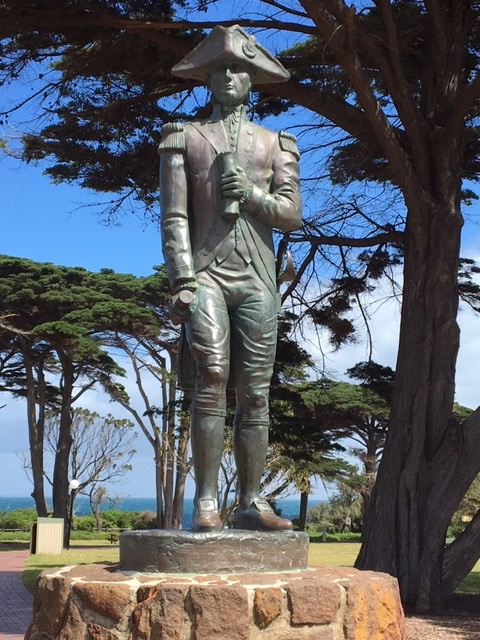 I’ve given the book a working title of The Investigators, partly because that’s what the crew of the ship called themselves.
I’ve given the book a working title of The Investigators, partly because that’s what the crew of the ship called themselves.
It’s also an acknowledgment of the spirit of enquiry and adventure that drove men to discover what was for them the unknown, despite all the hardships of scurvy, a rotten vessel, shipwreck and the dangers of the Barrier Reef (named as such by Flinders) and a little-charted coast.
Matthew Flinders at Mornington
It was Flinders’ highly accurate charts, especially of the south coast, Torres Strait and the Gulf of Carpentaria, together with his circumnavigation, that so opened the continent to future exploration. Some of his charts were being used until recent times.
As things stand, we hope to be settled somewhere in Mornington by late autumn, when I can again turn the mind seriously to further travel.
The south coast between Ceduna and Port Phillip will be important to see – and also a trip to England to visit Flinders sites in Lincolnshire and research at the National Maritime Museum at Greenwich.
Fortunately I have time on my side. I’ve signed a publication contract with Penguin Random House, but delivery of the final manuscript isn’t due until March 2022.
We’re hoping to publish around mid-2023, to coincide with the 220th anniversary of Investigator completing the first circumnavigation of the continent which Flinders called Australia.
Cook 2020 Commemorations
Readers interested in the Captain Cook commemorations next year, will probably already have caught up with some of the many events planned to commemorate the 250th anniversary of his sighting of the east coast of what was then New Holland in April 1770. Those still looking for information will find a quite comprehensive program with links at http://jamescook250.org/news-information/
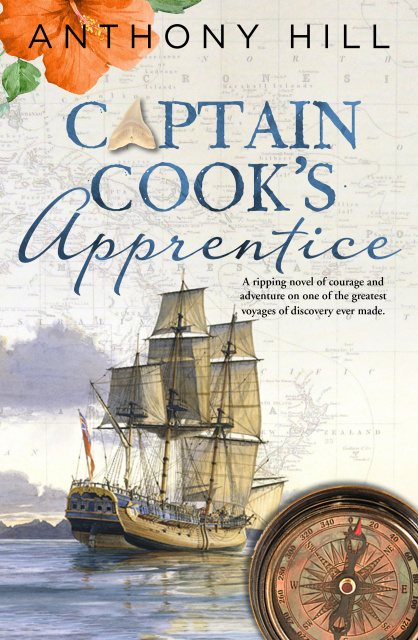 One of the main events will be the circumnavigation of the continent by the replica HMB Endeavour. Cook only charted the east coast, but the circumnavigation is intended to unite all Australians in this significant moment in the nation’s story.
One of the main events will be the circumnavigation of the continent by the replica HMB Endeavour. Cook only charted the east coast, but the circumnavigation is intended to unite all Australians in this significant moment in the nation’s story.
The voyage will commence in February next year with the first leg from Sydney to Geelong and Hobart, returning to Kamay-Botany Bay for the first landing commemoration in April, then continuing up the east coast, across to Darwin, down to Fremantle, Albany, Adelaide and Melbourne, arriving back in Sydney in May 2021.
The Australian National Maritime Museum has arranged an Encounters 2020 program which aims to both recognise Cook’s scientific achievements and consider the lasting impact of European contact on the indigenous people of Australia.
Cook’s 250th will include a number of epic indigenous stories giving the view of Cook’s landings from the shore – from ‘the other side of the beach’ as it’s sometimes known.
The Captain Cook Society will hold a joint New Zealand/Australia meeting at Mallacoota, near the Victoria/New South Wales border on 16 and 17 April, and at Point Hicks (formerly Cape Everard) from 19-20 April, to coincide with the actual anniversary of the first sighting on 19 April.
Literary Awards
Congratulations to the winners and short-listed authors/illustrators in the major literary awards announced in recent months:
Booker Prize. Margaret Atwood for The Testaments (sequel to the bestselling Handmaid’s Tale) jointly with Bernadine Evaristo for Girl, Woman, Other. Bernadine is the first black woman to win the prize.
Miles Franklin Literary Award. Melissa Lucashenko for Too Much Lip. Melissa is the third indigenous Australian writer to win the Miles Franklin.
Prime Minister’s Literary Awards. There are six categories: Fiction, Gail Jones for The Death of Noah Glass; Non-fiction, Paul Genoni and Tanya Dalziell for Half the Perfect World: Writers, Dreamers and Drifters on Hydra 1955-64; Australian History, Meredith Lake for The Bible in Australia: A Cultural History; Poetry, Judith Beveridge for Sun Music: New and Selected Poems; Children’s Literature, Emily Rodda for His Name was Walter; Young Adult, Michael Gerard Bauer for The Things That Will Not Stand.
Children’s Book Council of Australia Book of The Year Awards. There are six categories: Older Readers, Clare Atkins for Between Us; Younger Readers, Emily Rodda for His Name Was Walter; Early Childhood, Alison Lester for Tricky’s Bad Day; Picture Book, Shaun Tan for Cicada; Eve Pownall Award, Coral Vass, ill. Dub Leffler for Sorry Day; New Illustrators, Daniel Gray-Barnett for Grandma Z.
Christmas story
With the release of the third series of The Crown last month on Netflix (something of a disappointment, I felt, after the brilliant first two series), and renewed interest in the Royal Family through the doings of Prince Harry, Prince Andrew and realisation that the Queen’s reign must be in its final years, I offer a little story from the beginning of this second Elizabethan age.
You’d have to be well over 60 to remember the first Royal Tour of 1954 – the sheer public excitement and dare I say patriotism of it all, when a reigning British monarch first came to Australia. And while I cannot vouch for Josephine, I can vouch for her tale…
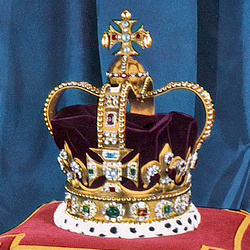
Royal Tour
The Royal Tour of 1954 was very important for patriotic people – and Josephine's people were very patriotic indeed.
At the time of the Coronation the year before, Josephine's family hung flags (the Australian one and the Union Jack) in the front room window. They sat up all night listening to the service on the radio, direct from Westminster Abbey. It sounded a bit washed out, as though it were taking place under the sea. Which, in a way, it was. Josephine's father explained it was coming all the way by cable beneath the ocean from London, on the other side of the world.
'It's still a flaming marvel but,' he said. Josephine's father sometimes used language. He had been decorated by the King's own brother during the War (though not for his language). 'It makes you proud to be a member of the British Empire ... one big fambly of nations. Not like those flaming republicans with no king or queen to look up to.'
Josephine knew what he meant. She felt much the same way when her cousin, Dawn, got married and – as part of the one big family – she was asked to be a bridesmaid. Then again, her birthday was on May the twenty-fourth, which was known as Empire Day. Josephine used to think the bonfires and fireworks were especially for her, until her father said it was the same birthday as old Queen Victoria. She was not too disappointed. After all, it gave her something in common with royalty. May the twenty-fourth was no ordinary birthday.
Josephine's mother kept a scrapbook full of pictures of the Royal Family. She started it years ago when the Queen was still one of the 'Little Princesses'. There was a photograph of her as a baby with curls, and another leaning out the window of her cubby-house with her sister, Margaret Rose. There was a picture of the Princess in army uniform being an inspiration during the War; and of course many cuttings of the Royal Wedding to Prince Philip, and the babies that followed.
When the King died and Elizabeth became Queen, the scrapbook bulged with pictures of the Coronation: the golden coach, the jewelled crowns, and everybody in dress-ups. Sometimes Josephine day-dreamed she had actually been there in Westminster Abbey, and not just heard it underwater on the radio in the front room of her ordinary suburban house.
And then it was announced that the Queen and Prince Philip were to come on a Royal Tour. Josephine was thrilled. In 1954, it was the first time a crowned head had set foot on our southern strand (as Josephine's headmaster put it at school assembly). Most people had only seen the Queen in magazines and scrapbooks, or saluting from a horse when you stood for the National Anthem at the end of the pictures. (If you waited that long. The audience sometimes ran for the exits during the National Anthem, which Josephine's parents thought a disgrace and showed lack of proper respect.)
For patriotic people, then, the chance to see Her Majesty in the flesh was something not to be missed. Josephine's people made the most of it. They followed every detail of the Royal Tour in the newspapers. The scissors were kept busy cutting out scraps (it was Josephine's job to paste them into the album). The flags were rehung at the front windows. The radio was hardly turned off (for there was no television to bring the world into the front room, and reduce it to the commonplace). And they went to the pictures to see the newsreels as often as they could.
In this way they learned how radiant the young Queen looked setting her foot on our southern strand. They saw how she managed to smile beautifully, while shaking thousands of important hands and listening to a great many speeches (all of which sounded the same).
Josephine wished her father was somebody important, so that she could stand in a queue to shake hands with the Royal Couple. She might even have had the chance to practise a curtsey and present Her Majesty with a floral bouquet. But she wasn't asked.
Josephine wasn't even asked to join the other girls from school who took part in a special display for the Queen at the Cricket Ground. She wasn't all that upset. Josephine hated folk-dancing and besides, the girls told her afterwards, there were so many children when the Queen drove by in the back of a jeep, all they'd glimpsed was the top of her hat and a gloved hand waving.
'It wasn't what I thought,' said her friend. 'I thought she'd smile and wave especially at me, but I hardly seen her.'
Josephine's people had a better offer.
On the Saturday afternoon, the Queen was going to the races. Josephine's cousin, Dawn, worked in a cake-shop along the very road down which the royal procession would pass. The woman who owned the cake-shop wondered if Josephine's family would like to watch the motorcade from a vantage point outside her shop?
'Blood oath,' said Josephine's father. It was more language, but Josephine didn't care what words he used, so long as they meant 'yes'.
She could hardly wait. Josephine was going to see the Queen! She would stand in the street, cheering and waving her flag. But, unlike her friend, the Queen would pick her out from all the thousands of other loyal subjects, and smile and wave especially at her. And Josephine would feel touched by it: made very special by whatever grace and mystery it was the Queen possessed. She, too, would become important, if only for a day. Well, didn't she have the same birthday as old Queen Victoria?
They got there hours early that Saturday morning. Josephine was afraid they'd miss the best spot. But although the wooden barriers were in place beside the footpath to keep the crowds back, there were not many people about at all, except those doing their weekend shopping.
To pass the time (for the hands on the Town Hall clock moved very slowly), they walked up and down the street, admiring the flags and bunting hanging from the light poles, and the decorations in the shop windows. Josephine thought the florist-shop was the nicest, with garlands of red and white roses surrounding the royal portraits cut from a magazine (they had the same pictures in the scrapbook).
She wondered if the Queen might stop and buy some flowers, but her mother thought not. Her Majesty probably had enough floral tributes already. Anyway, her mother said that Royalty never carried any money with them. Josephine didn't understand that. The Queen was supposed to be loaded!
They walked up and down the street so many times, that Josephine's father (despite his War medal) complained of being 'footsore'. They ate so many pies and iced buns from the cake-shop, that Josephine was afraid she might puke. And still the hands on the Town Hall clock hardly seemed to be moving.
Her mother bought a book about the Royal Tour from the stall outside. Josephine tried to read it, but she couldn't: one half of her was too excited, and the other half was getting bored.
Yet the hour hand on the clock did move. All at once, something was happening. The street began to fill with people who seemed to come from nowhere. There was noise and people jostling for the best spots beside the wooden barriers. People with little coloured flags (the Australian one and the Union Jack). People with cameras and cardboard periscopes. People wearing special Royal Tour badges, and carrying Royal Tour booklets, coffee mugs and tea-towels (bought loyally from the souvenir-sellers). Hundreds – thousands of people, all of whom had come to cheer the Queen, waiting for her to smile and wave especially at them.
Josephine's father elbowed his way to the front of the barrier outside the cake-shop. People complained of having their toes trodden and their view blocked. But Josephine didn't care. She carried her own vantage point – a small stool from the cake-shop on which to stand. Her father had his camera ready to snap the scene when the Queen passed and...
She was coming! Josephine could sense the ripples in the crowd further up the street, as police motorbike-riders and some horses and a big black car came into view. The Queen really was coming! Dressed, so it seemed, in gold. Josephine could feel the excitement rising like a tide all about her as they drew nearer. She could hear the cheering and see the flags waving - and she was swept up in the emotion, as though she were tossing in a river of colour and movement and noise.
Like a ship parting the foaming water, the royal procession came closer and closer. Josephine began to wave her own little flag and shout 'Hooray!' And standing tip-toe on her stool she waited for that moment of benediction when the Queen would turn, and see her, and smile, and wave especially at Josephine...
She was gone.
A few seconds of upheaval, and the torrent of sound and agitation began to subside: to be carried further down the street, as a running wave breaks along a sandbar. People resumed their normal selves. They said to each other, 'Did you see her?', and 'Isn't she beautiful?', and 'So young!', and 'I got a lovely photo.'
Josephine, looking down the road, could only see a disappearing motor car – big, black and shiny – and the back of a woman sitting in it, wearing a yellow dress and a yellow hat, moving her arm.
She didn't know whether the Queen was young or beautiful, or whether her father had taken a lovely picture or not. All she knew was that when the procession had passed and Josephine had smiled and waved especially at her, the Queen had been turning and looking at the people on the other side of the street.
'It's a shame,' said Josephine's father when they went home, 'but at least you can say you saw her.'
Josephine didn't say. She didn't care. It wasn't important. She rarely looked at the scrapbook again or waited for the National Anthem at the pictures. And lots of people had their birthday on May the twenty-fourth.
Josephine grew up a flaming republican.
Books in print:
Books still in print can be ordered through the website here
• Animal Heroes ($33 plus $8.50 postage)
• The Burnt Stick ($17.00 plus $3.00 postage)
• Captain Cook’s Apprentice ($33 plus $8.50 postage)
• For Love of Country ($35 plus $13.50 postage)
• The Story of Billy Young ($23 plus $8.50 postage)
• Soldier Boy ($20 plus postage $3.00)
• Young Digger ($30 plus postage $8.50)
Complimentary bookmark, signature and personal inscription are included. I will refund any excess postage if multiple books are purchased.
The next scheduled newsletter will come out in June/July.
Until then, with best wishes for Christmas and a wonderful New Year
Anthony
Photos: Cover of The Last Convict and Captain Cook’s Apprentice, courtesy Penguin Random House; Flinders memorial, statue and coast at Mornington, Anthony Hill; St Edward’s Crown, Wikipedia Commons. Royal Tour was first published in Growing Up and Other Stories (Ginninderra Press, 1999).
http://www.anthonyhillbooks.com
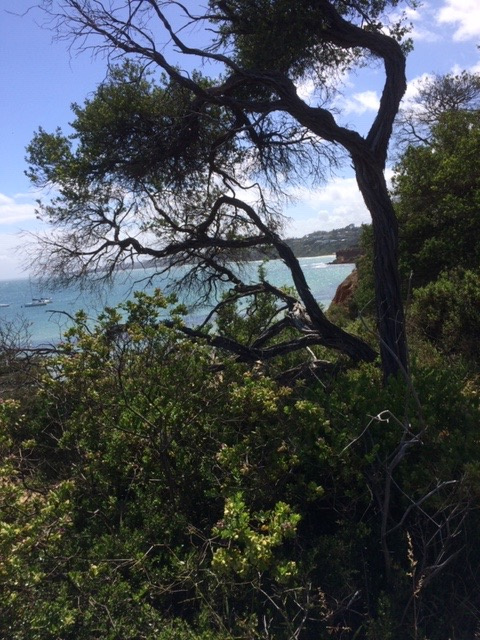
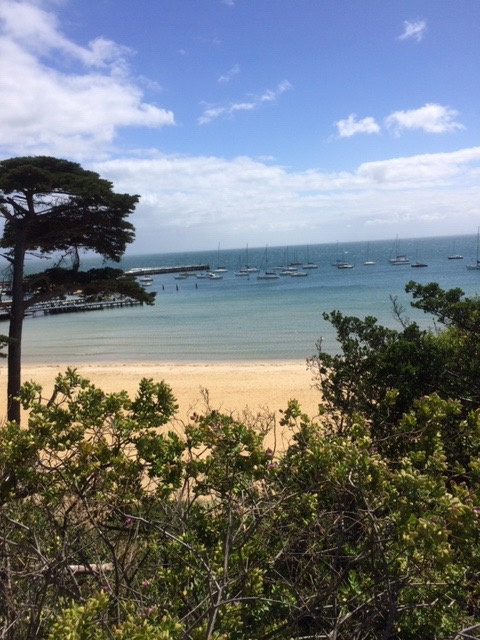
Feels like coming home…
Two views along the Mornington coast